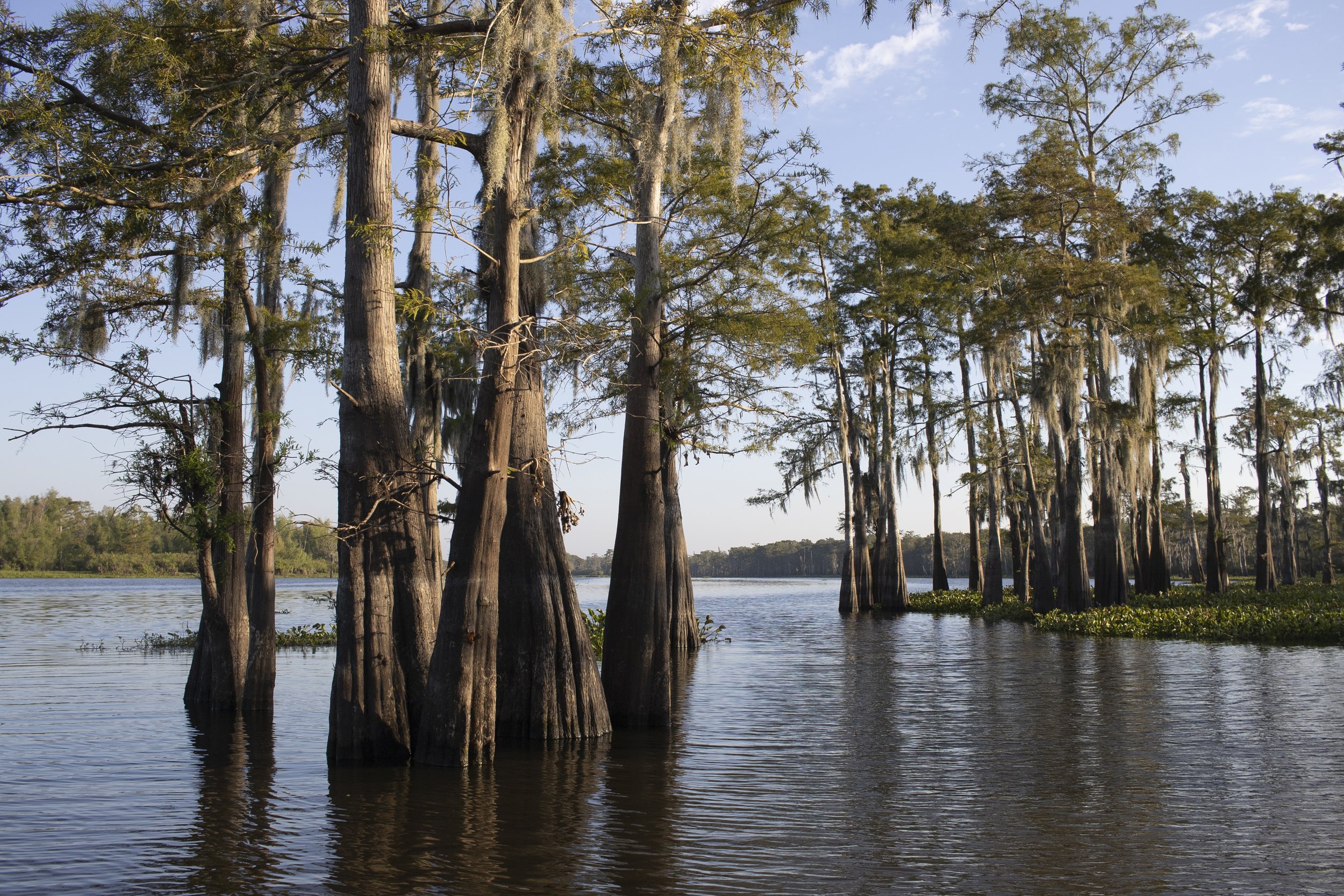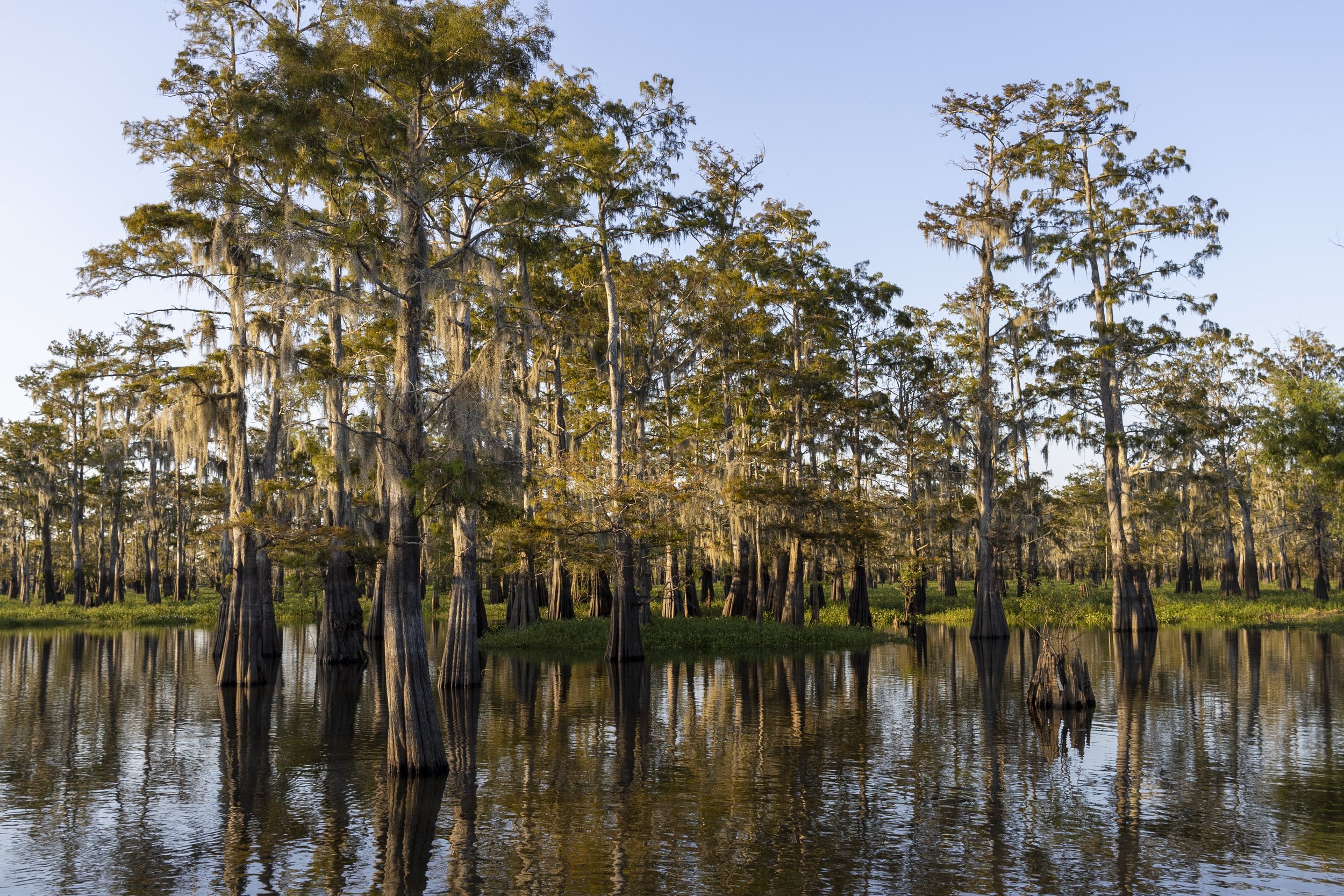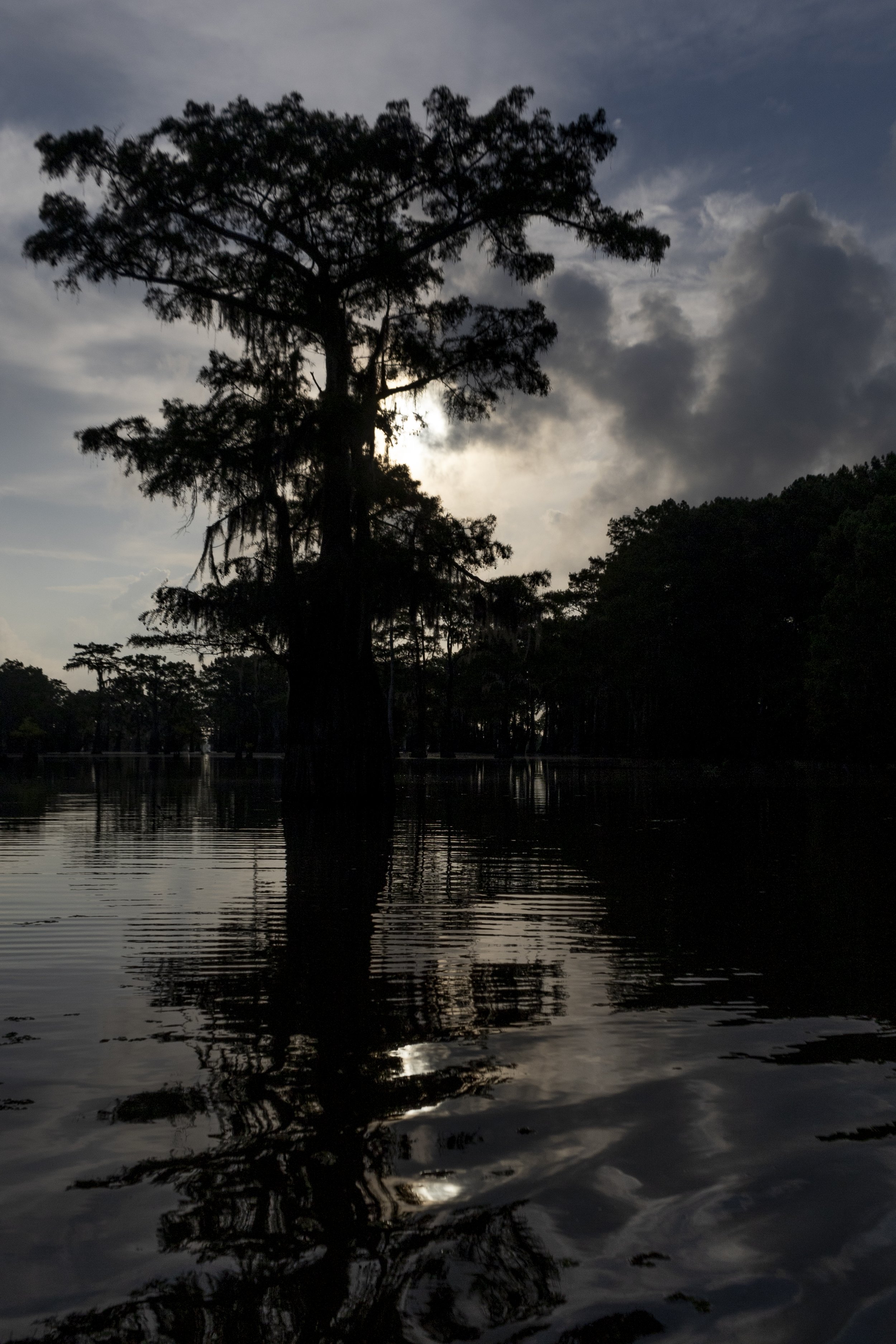
Atchafalaya Basin
The Mississippi River is to the United States what the Amazon River is to South America, or what the Congo River is to Africa. A river that massive doesn’t just flow neatly into its outlet. It branches into a sprawling array of waterways and wetlands, submerging nearly the whole southern half of Louisiana on its way to the Gulf of Mexico. Through these shifting wetlands winds the wild Atchafalaya, mightiest of the mighty Mississippi River’s branches.
Henderson Lake
The Atchafalaya has never been easy to define, nor straightforward to untangle or tame. How wide it is and how wet it is depends on the season, and even the time of day, not that you would ever be able to tell where the water ended and the land began anyway. It’s wilder than your typical river, wonderfully unruly, a river-swamp meandering its way through a maze of flooded forests, oozing water in all directions along its course.
Bayou Benoit
As the Atchafalaya River threads through Louisiana, from its origin at the Mississippi, winding its wild way toward its delta at the Gulf of Mexico, a long levee road ribboning alongside it, it winds through St. Martin Parish more than it winds through any other.
Home to more than three hundred bird species, sixty-five species of reptiles and amphibians, a hundred species of fish, not to mention black bear, deer, nutria, opossum, beaver, muskrat, otter and raccoon, and more wild crawfish than anywhere else on earth, the Atchafalaya River Basin, that big bathtub of water, provides excellent opportunities for boating, hunting, fishing, camping, birdwatching and nature photography. But I’d say it goes much deeper than that.
Bald cypress
When you’re out there, at sunrise, say, kayaking through clusters of cypress trees, and the black sky is slowly turning lavender, and ospreys are circling their nest, a feeling can completely wash over you. In those moments, you realize you’ve never seen your home planet more clearly. You’ve know you’ve never been closer to Earth.




